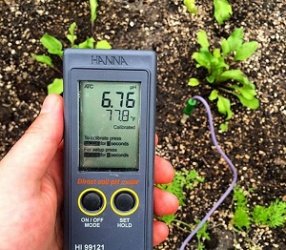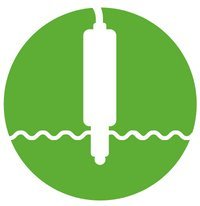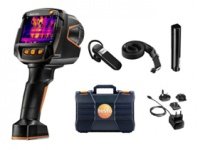8 tips to extend your pH meter’s operating life and ensure accurate measurements every time!

You’ll find pH meters used everywhere – from laboratories to fieldwork. At the touch of a button, homeowners or professionals can glean significant information about a substance’s acidity or alkalinity using these instruments.
Today’s tip is, “Don’t neglect the regular maintenance of your pH meter”. Otherwise, you’ll get unreliable results and shorten your meter’s life. Follow our experts’ 8 tips for accurate pH measurements every time!
About pH Meters
There is a meter to measure anything - chemicals in a laboratory, soil on a farm or garden, you name it. There are meters for specific tasks and various designs - pen meters, handheld devices, and professional benchtop models. And all pH meters need some regular TLC and maintenance.
8 Tips for Accurate pH Measurements
 |
1. Calibrate Regularly
Nearly all pH meters require regular calibration. The optimal calibration method and frequency will depend on the device you use, how precise your readings need to be, and how often you use your device. How to calibrate a pH meter? The key is to know what the right calibration frequency is. Start by referring to the instructions supplied, or contact us if you’re unsure. We recommend calibrating your pH meter to a minimum of two points, shouldering your expected pH range. If you want greater accuracy, add more calibration points.
|
|
|
2. Ensure the electrode remains hydratedYour pH electrode must be stored correctly. If not, your meter’s pH measurement accuracy and response times will gradually reduce. How to fix a dry pH electrode? Submerge your pH electrode in electrode storage solution for one hour, then calibrate. When finished, proceed to measure with confidence.
|
|
|
3. Store in the correct solution
pH electrodes should be stored in the correct solution to ensure that they are ready for use. Never keep your pH electrode in deionised water, as it will cause the ions within the electrode to leach out. Your meter will perform poorly, but you could also ruin it! What is the correct solution for pH electrodes? Always store your pH electrode in an electrode storage solution. If this is not possible, store in pH4 calibration solution. |
|
|
4. Clean your pH electrode frequently
You can't always see it, but a dirty electrode is the most common cause of pH meter inaccuracy. Worse still, calibrating a device with an unclean electrode will produce a standardisation curve based on incorrect readings. This problem will persist until your next calibration – even after your meter is cleaned. How to clean a pH electrode? Watch a scientist demonstrate “How To Clean A pH Meter Using Electrode Cleaning Solution”.
|
 |
5. Inspect often
What if you clean your pH meter, store it correctly and calibrate it often, but your measurements seem slow or inaccurate? Because most pH electrodes are made from glass or have glass components, they’re susceptible to accidental damage. Check for any cracks or breaks before each use. IC TIP: pH electrodes are consumables and, depending on use, should last between 6-24 months. When choosing a pH meter, look for pH meters with replaceable electrodes. Replacement electrodes are a fraction of a new meter’s price! |
|
|
6. Handle properly
pH meters and their electrodes are made of sensitive electronic equipment. Be careful when using or cleaning your meter. For example, wiping the meter’s electrode with a cloth or tissue can create static and interfere with your pH readings. How to handle your pH electrode properly? Never wipe an electrode with a cloth or tissue unless specified in the manual. Instead, clean your electrode between measurements by rinsing and gently shaking off the excess moisture. Blot the probe dry with a lint-free cloth to remove excess moisture only as needed. |
|
|
7. Consider application-specific electrodes
The most common pH electrode is the glass bulb type because it’s versatile and affordable. However, there are numerous tasks needing a specialised electrode design – like the measurement of:
|
 |
8. Completely submerge the electrode when measuringSlow or inconsistent readings could indicate that you are not submerging your electrode adequately. How to adequately submerge an electrode for a pH measurement? Generally, immerse part of the sensing glass and the junction. However, check the user guide for the minimum required submersion depth and always set aside enough sample volume before taking a pH measurement. |
The Final Word
Following the eight tips listed above will guarantee quick, accurate pH measurements from your pH meter and extend its operating life.
For more information or assistance with your pH meter, speak with an Instrument Choice Scientist: Call 1300 737 871 or email [email protected].
Also interesting
Instrument Choice proudly stocks over 150 brands of scientific instruments and laboratory equipment. Our mission is to provide customers with the widest selection of scientific instruments, all in one place, so you can measure anything and measure everything.
To help you find the best products to suit your application, Instrument Choice Scientists regularly spotlight new products so you can better know what they offer. This edition introduces products from Hioki, an industry-leading electrical test and measuring instrument manufacturer.
Check out Hioki’s instruments here

Instrument Choice's team of scientists regularly reviews new and popular products, so you can make informed decisions when searching for the perfect scientific instrument for your application.
The Testo 883 is the perfect partner for service engineers, facility managers and building energy consultants who require a device that offers:
- outstanding image quality
- automatic allocation/archiving of thermal images to the measurement object; and
- professional image analysis and reporting.
Get our scientists’ review of the Testo 883 Thermal Imager
READ MORE >






